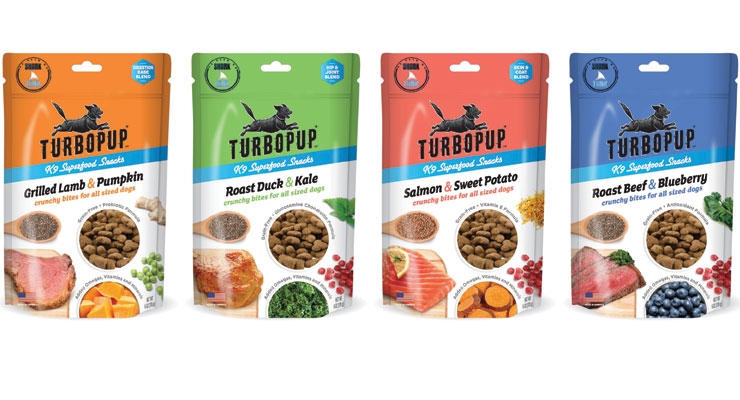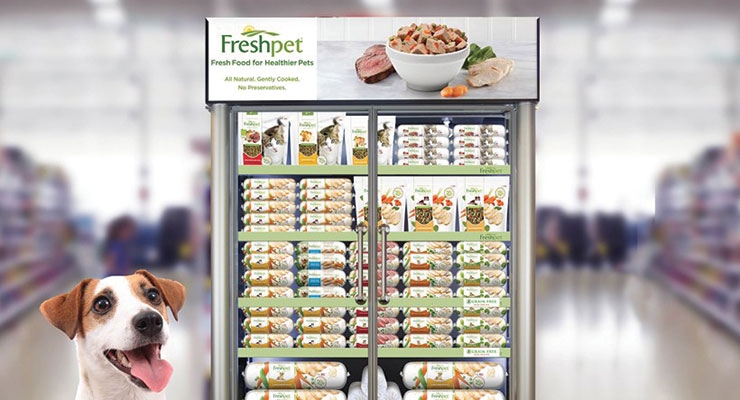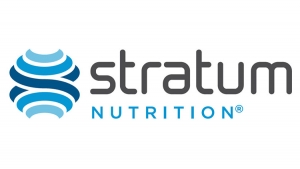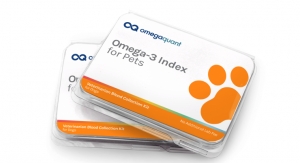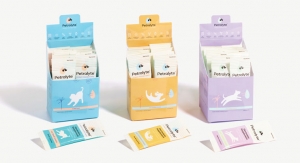By Lisa Olivo, Associate Editor09.07.17
The “humanization” trend among pet owners is here to stay, and it is greatly impacting how beloved family pets are cared for and fed. Where cats and dogs were once merely companion animals, now these “fur babies” are truly part of the family, and are often nurtured and pampered just as one would their own child. As more of these pet parents look toward natural, high-quality foods and supplements to improve their own health, these same purchasing patterns are emerging in the products they select for their cherished furry friends.
“Consumers are increasingly interested in the happiness of their pets and often take pleasure in indulging them with premium and super premium foods and increasingly sophisticated snacks and treats,” explained Lu Ann Williams, director of innovation for The Netherlands-based Innova Market Insights. “Many of these also carry health positionings, particularly relating to clean labeling, but also to free-from formulations, such as grain-free and non-GMO.”
Ms. Williams suggested the overlap between human food trends with that of the pet nutrition market is well-recognized at this point, with differences between the two sectors rapidly shrinking. Highlighting key areas of interest in both human and pet markets, she said products promoting “provenance, organic and non-GMO ingredients, free-from options and low carb recipes” were on the rise.
Further demonstrating consumers’ focus on their pets’ health, 80% of global pet food launches recorded by Innova Market Insights in the 12 months to the end of September 2016 were marketed on a health platform of some kind, rising to over 90% in the U.S. Meanwhile, nearly 53% of pet food launches in the U.S. used natural and/or no additives/preservatives claims, driving interest in natural and organic formulations.
Discussing the consumer desire for safe and healthy pet nutrition products, Gabe Herrick, vice president of sales for Ganeden, Mayfield Heights, OH, cited research from London-based research firm Mintel, which found nearly eight out of 10 pet owners said the quality of their pets’ food is as important as their own. He predicted functional ingredients used in more traditional pet supplements will continue to be key ingredients in functional pet food and treats. “Just as these ingredients and their health benefits continue to drive consumer interest in foods and beverages for human consumption, we predict they will continue to grow and be used in the fortification of companion animal products as well.”
While fortified food and treats may be taking a bite out of the pet supplement category, the sector still saw modest growth in the past year. Packaged Facts’ report “Pet Supplements in the U.S., 6th Edition,” indicated pet supplement sales reached $580 million in the U.S. in 2016, up 3.5% from the previous year.
Yet another essential factor driving growth for all aspects of the pet nutrition market is the increase in pet ownership itself. Pam Stauffer, global marketing programs manager, Cargill, Minneapolis, MN, explained that “More than two-thirds of American households (68%) own a pet, compared to about half (56%) in 1998 [American Pet Products Association (APPA) National Pet Owners Survey, 2017-18.].” Welcoming animals into more of our homes has changed consumer attitudes and perceptions toward pets, she said. “For many Americans, our four-legged friends are more than companions; they complete our families. This trend toward ‘humanization’ of pets has led to heightened concerns about the quality, health, and safety of foods for companion animals.”
Sought After Ingredients
To safeguard their beloved pets’ health, pet owners are looking to natural, well-researched, nutritional ingredients.
Above all else, consumers want to make sure their pets are healthy, commented Ramon Luna, marketing coordinator, Ecuadorian Rainforest LLC, Belleville, NJ. “To do this, they are looking to give pets the nutrients necessary in order to live a healthy life. That’s why many are turning to natural ingredients for the nutrients pets would usually consume. This covers a wide breadth of ingredients, but also allows for nearly limitless formulation, giving consumers more choices when dictating their pet’s diet.”
Demonstrating the overlap between popular ingredients in human and pet health, Ms. Williams of Innova Market Insights noted that pet products promoting protein content have been increasing, just as they have in the human food and beverage market. “Overall, just over 30% of launches featured high in/source of protein claims in the 12 months to the end of September 2016, up from just 20% a year previously. There has also been ongoing interest in alternative and more exotic protein sources, such as game meat, bison, and seafood,” she said.
Mr. Luna also cited alternative proteins as a growing area of interest, allowing pet owners to make dietary decisions for the pets that coincide with their own lifestyles. “As pet owners move toward offering their pets the same quality food they eat, they are also adjusting the pet’s diet to their own. So vegetarian and vegan pet owners are reaching out to see if there are alternatives to the meat found in most pet foods. Turns out there are, in beans and seeds and other vegetarian protein sources.”
Meanwhile vitamins/minerals were the leading active positioning for pet foods launches, used for just over 23% of introductions in the 12 months to the end of September 2016, according to Innova Market Insights, edging ahead of digestive/gut health on 22%.
Ms. Williams also noted increased interested in omega-3s (featured in over 15% of new launches), while skin health positioning has become a prominent claim (featured in 14% of launches) as well. The use of allergy positionings is also gaining steam, with a strong rise in gluten-free and grain-free formulations for both dog and cat foods. “Overall, over one-fifth of launches carried a gluten-free positioning, rising to nearly a quarter for dog food,” Ms. Williams said.
Mr. Luna observed an increase in the use of “superfoods” in pet food products. “While this category has focused mainly on human consumption, a segment of pet owners and pet food manufacturers are taking superfoods and putting them directly into pet foods,” he said. “They hope that the antioxidant properties that have been so beneficial for humans can be transferred over to their pets.”
Targeting key pet health concerns such as digestive health, immune health, and joint support, probiotics are growing in popularity as effective nutritional solutions. Mr. Herrick of Ganeden commented, “Because most strains are fragile and need to be refrigerated or encapsulated, there wasn’t an option in the past to add probiotics directly into shelf-stable pet foods, treats, etc. However, our patented strain of probiotic, GanedenBC30 (Bacillus coagulans GBI-30 6086), has been shown to have positive effects on all three health areas.”
Digestive health, a common issue among companion animals, can be addressed with other nutraceutical ingredients, including ginger and digestive enzymes, according to Shaheen Majeed, president, Sabinsa Worldwide, East Windsor, NJ. He also stressed the benefits of probiotics for pets at all walks of life. “For both young and aging pets, the absorption of food and maintaining digestive microflora is important, and so the use of probiotics is now getting quite popular with pets. LactoSpore is a probiotic that can sustain its probiotic benefits even at room temperature for shelf life of three years.”
Additionally, he pointed to common issues such as obesity and joint pain as causes of concern for pet owners. “A major concern for pet owners dwelling in cities is joint health, with pets not getting sufficient exercise, which is also one of the leading causes of obesity in pets,” said Mr. Majeed. He suggested digestive enzymes can be helpful in weight management. “As a digestive enzyme blend, Sabinsa’s Digezyme is very stable and can be delivered in pills or crushed on food, giving options since not all pets can be given supplements in the same way. It helps in digestion of essential nutrients.”
Mr. Majeed added that joint health is a common issue—particularly with large or aging dogs—for which curcumin and Boswellia serrata may be used to offer some support. “Curcumin can be given along with other joint health ingredients such as glucosamine. Boswellin is known for its anti-inflammatory benefits and can assist the inflamed joints.”
In 2014 Sabinsa launched a division called VetVitals to provide ingredients addressing common health needs in pets. The line’s offerings include LactoSpore VG, a shelf stable probiotic of Bacillus coagulans; Boswellin VG, an extract from the gum resin of Boswellia serrata; Curcuminoids VG, a standardized extract from the rhizomes of Curcuma longa; VetZyme, a proprietary combination of enzymes for digestion and food absorption; and VetPerine, an extract from the fruits of Piper nigrum that is used as a bioavailability enhancer.
As a result of pets being well-cared for, they’re living longer lives. For elder pets, issues such as arthritis, joint health, and even diabetes are becoming areas of concern. Nena Dockery, technical services manager for Stratum Nutrition, St. Charles, MO, said that living a longer life means, “more animals are developing health challenges that diminish their quality of life, such as diabetes and arthritis. Nutraceuticals can be particularly beneficial in these areas.”
Ms. Dockery pointed to joint pain as a key problem impacting the quality of life for senior pets. Whether it’s a beloved dog not being able to run and jump with the kids anymore, or a cat that’s less agile and therefore putting on weight, many of these issue stem from this root issue. “Joint health is among the most noticeable areas that consumers desire to support, as challenges in this area are more obvious, even from the onset,” she said. “And joint health problems can affect other areas of the pet’s health. If our canine family member has trouble getting up in the morning, she may be less likely to be active later in the day, which in turn can contribute to weight gain and a propensity toward other health conditions.”
She said that one of the first ingredients introduced into the pet supplement market was glucosamine, sold to help support joint health. “Since that time, other ingredients have been added to this large category. One of the best researched ingredients is NEM brand eggshell membrane. Research conducted in several animal species substantiates its benefits in non-humans.”
Cargill also offers a broad portfolio of ingredients that can be used to formulate pet nutrition products, including native starches, maltodextrin, hydrocolloids such as carrageenan and xanthan gum, soy and pea proteins, plant-sourced lecithins and health-promoting ingredients like inulin and vitamin E, the company’s Ms. Stauffer said.
Emerging Research
To back the usage of nutraceuticals for pet health, many ingredient suppliers are exploring clinical research to provide scientific support for their products.
Sabinsa Worldwide is currently monitoring research for reducing stress, from which Mr. Majeed suggested companion animals suffer as much as their humans. “Adaptogens may prove a strong area for pets,” he added. “Another interesting area is antimicrobial benefits, because many dogs and cats will eat anything and everything they come across.”
Mr. Herrick of Ganeden highlighted that when examining the benefits of probiotics, all results are dependent on the strain of bacteria being used. However, he said pets’ digestive systems work similarly to humans, and many of Ganeden’s studies have shown that GanedenBC30 supports digestive and immune health in animals. “We also believe that a healthier gut promotes protein and nutrient absorption in companion animals, based on our human clinical data and studies. Because of its efficacy and stability, GanedenBC30 has been fortified into a variety of companion animal products, including pet foods and treats.”
A 2016 study published in the journal Veterinary Medicine: Research and Reports reviewed Stratum Nutrition’s NEM brand eggshell membrane in several breeds of dogs, demonstrating its benefits for joint health. The six-week, prospective, randomized, double-blind, placebo-controlled study was conducted at eight different veterinary clinics and designed to evaluate the efficacy, safety, and tolerability of NEM in a canine population. Fifty-one dogs received either NEM or a placebo containing only excipients, once daily for six weeks. The primary outcome measure of this study was the evaluation of any change in mean joint function following one week and six weeks of supplementation, using the Canine Brief Pain Inventory (CBPI) questionnaire. The secondary outcome measures were for changes in mean CBPI pain and CBPI quality of life, and mean joint pain, mobility, and lameness via Veterinary Canine Scoring Assessments (VCSA). Another secondary outcome measure was for discernable changes in the serum levels of the cartilage degradation biomarker, c-terminal cross—linked telopeptide of type-II collagen (CTX-II).
The study found significant positive results for the overall treatment response at week one (20.5% improvement, P=0.028), CBPI Pain (19.4% improvement, P=0.010), and CBPI quality of life at the end of the study (26.8% improvement, P=0.033). In addition, there was a significant treatment response versus placebo at six weeks for VCSA pain (23.6% improvement, P=0.012). Serum CTX-II levels in NEM-supplemented dogs were significantly improved versus placebo at six weeks (47.9% improvement, P=0.018). NEM was well tolerated with no serious side effects reported.
Regulating the Market
In the U.S., the regulations governing the use of dietary supplements in animals are not the same as those for human supplements, explained Ms. Dockery. “When the Dietary Supplement and Health Education Act (DSHEA) was passed in 1994, it altered the way nutritional supplements are regulated in humans. However, FDA’s assessment was that DSHEA was not intended to apply to animal feed, including pet food. As a result, products marketed as dietary supplements or ‘feed supplements’ for animals still fall under the Federal Food, Drug, and Cosmetic Act (FFDCA), under the oversight of the Center for Veterinary Medicine (CVM).”
CVM, she noted, is responsible for determining on a case-by-case basis whether new animal products and the ingredients contained in them are “foods” (Generally Recognized As Safe status and manufactured under safe and sanitary conditions) or “new animal drugs” (requiring investigational new animal drug (INAD) notices). From there, all ingredients in an animal supplements are subject to scrutiny, including additional ingredients such as flavorings, texturizers, and other excipients. FDA further cooperates with other partners, such as the Association of American Feed Control Officials (AAFCO) to establish uniform feed ingredient definitions and ensure proper labeling.
Ms. Dockery cautioned, “The biggest takeaway is that companies cannot assume that all ingredients allowable in human dietary supplements can necessarily be incorporated in pet supplements.”
While Mr. Majeed said there is no requirement for pet supplements or pet food to obtain pre-market approval, he noted that FDA oversees the safety of pet food and ingredients. “Pet food labeling has been based on the AAFCO’s guidelines and overseen by FDA,” he explained. Further, associations like the National Animal Supplement Council (NASC) advises on the safety and labeling issues of pet supplements, similar to how trade organizations advise on quality and safety for the human dietary supplement industry.
Mr. Herrick of Ganeden underscored the importance of proper regulation of such products, especially since pets often get all of their nutrition from just a few sources. “Companion animals typically get their entire food intake from one product, so regulations need to protect this limited diet,” he said. “If manufacturers include functional ingredients, they should be science-driven and safety-focused.”
Innovative Products
In line with what’s become in demand for pet owners, many of the new product launches in the pet nutrition category feature recognizable, simple, whole-food ingredients, often touting organic or natural origins.
U.K.-based Euromonitor International cited a prime example of a new product that benefited from such a positioning with Schesir Fruit, a premium wet dog and cat food that combines meat or fish with such fruits as apple, kiwi, mango, and papaya. Launched in Italy by Agras Delic SpA in July 2015, Schesir Fruit was introduced after a study conducted by researchers at the University of Bologna found these fruits had a positive effect on the gut bacteria for both cats and dogs. The company also highlighted the antioxidant properties of these fruits. Despite a difficult economic environment, Euromonitor reported Agras’ value share of the Italian premium dog and cat food segment rose from 1.6% to 2.5% between 2011 and 2015.
Meanwhile in 2016 in the U.K., Tesco began to trial chilled dog food made by the U.S. company Freshpet in 30 of its outlets. Targeting the growing number of owners who seek human-grade food and are prepared to cook meals for their pets, the company claims that its products are “just like a home-cooked meal made in your kitchen.” The launch was met with considerable consumer interest, which Euromonitor attributed to the fact that the product is stocked in fridges, displaying its distinctive freshness to consumers. As a result of a successful initial rollout, Tesco expanded the Freshpet line from 30 to 300 of its stores in March of 2017.
In March 2016, Nestlé debuted Purina Beyond Simply 9 in the U.K. (and in the U.S. in 2014). The line included superfood and grain-free products, which were launched simultaneously with a wet offering. A hallmark of the line is that the foods include fewer, more natural ingredients. Euromonitor suggested this move toward “nine natural recognizable ingredients you know and trust” is in part a defensive move by Nestlé to fend off competition from other natural pet food manufacturers like Lily’s Kitchen and particularly MPM Products.
Innova’s Ms. Williams cited the launch of several functional snacks with premium positionings, boasting the use of healthy, on-trend ingredients from the human food market. “Turbopop K9 Superfood Snacks, for example, feature so-called superfoods in variants such as Pumpkin & Grilled Lamb Crunchy Bites, Roast Beef & Blueberry Crunchy Bites, Sweet Potato & Salmon Crunchy Bites and Roast Duck & Kale Crunchy Bites.”
Ganeden has worked with many companies to launch a variety of new probiotic pet products into the market throughout the last eight years, Mr. Herrick said. “Some examples of recent launches include Dr. Tim’s dog foods, American Journey dog foods, Pure Balance cat and dog foods, H3 Essentials Probiotic Chews and Darford Pet Tummy Treats.”
Ms. Stauffer of Cargill observed a consumer preference toward convenient, functional delivery formats as “pet owners seek easy-to-use products that do not require a lot of stress (for themselves and for their pet).” She added, “The easier the format, the more inclined the consumer will be to introduce it to their pet. Formats such as treats and chews, adding a neutral flavor product to the pet’s water, or adding it in with their food, are a few examples of convenient and least-disrupting routes of delivery.”
Mr. Majeed of Sabinsa also suggested that novel delivery formats are essential, especially for discerning dogs and cats. “As anyone who has tried to get their dog or cat to swallow pills can tell you, alternatives such as pastes, gels, and liquids would be popular dosage forms in this market,” he said. “Plant extracts often have gritty texture and strong odors. With very sensitive and sharp sensory skills, some pets may not accept natural extracts easily. Development of natural extracts in forms acceptable to pets and appropriate for fortification of pet foods is an area of focus. Supplements in the form of treats that animals find tasty is far better for compliance than pill forms, which may be difficult to administer with some pets.”
Future Outlook
As more consumers continue to learn about safeguarding their own health through the use of supplements and functional foods, it seems likely they will continue to apply this knowledge to the care of their beloved pets. In turn, this can only mean good things for the growth of the pet nutrition landscape.
“We believe, based upon our observations in the marketplace, that the pet nutrition market will continue robust growth as people apply what they learn for their own health and well-being to their animal companions,” said Mr. Majeed.
“The market for pet products with functional benefits will continue to be a growing and viable market segment,” commented Ms. Stauffer. However, she predicted more emphasis from consumers on transparency and pet food safety.
Ms. Dockery of Stratum Nutrition said there’s no reason to believe this category’s popularity with consumers will slow down anytime soon, as demand for different types of products designed for companion animals continues to grow.
Yet she cautioned, “As animal supplements become more readily available and the applications expand to different areas of animal health, it can be expected that the regulations governing them will become more defined, perhaps leading to regulations that are specific to animal supplements.”
“Consumers are increasingly interested in the happiness of their pets and often take pleasure in indulging them with premium and super premium foods and increasingly sophisticated snacks and treats,” explained Lu Ann Williams, director of innovation for The Netherlands-based Innova Market Insights. “Many of these also carry health positionings, particularly relating to clean labeling, but also to free-from formulations, such as grain-free and non-GMO.”
Ms. Williams suggested the overlap between human food trends with that of the pet nutrition market is well-recognized at this point, with differences between the two sectors rapidly shrinking. Highlighting key areas of interest in both human and pet markets, she said products promoting “provenance, organic and non-GMO ingredients, free-from options and low carb recipes” were on the rise.
Further demonstrating consumers’ focus on their pets’ health, 80% of global pet food launches recorded by Innova Market Insights in the 12 months to the end of September 2016 were marketed on a health platform of some kind, rising to over 90% in the U.S. Meanwhile, nearly 53% of pet food launches in the U.S. used natural and/or no additives/preservatives claims, driving interest in natural and organic formulations.
Discussing the consumer desire for safe and healthy pet nutrition products, Gabe Herrick, vice president of sales for Ganeden, Mayfield Heights, OH, cited research from London-based research firm Mintel, which found nearly eight out of 10 pet owners said the quality of their pets’ food is as important as their own. He predicted functional ingredients used in more traditional pet supplements will continue to be key ingredients in functional pet food and treats. “Just as these ingredients and their health benefits continue to drive consumer interest in foods and beverages for human consumption, we predict they will continue to grow and be used in the fortification of companion animal products as well.”
While fortified food and treats may be taking a bite out of the pet supplement category, the sector still saw modest growth in the past year. Packaged Facts’ report “Pet Supplements in the U.S., 6th Edition,” indicated pet supplement sales reached $580 million in the U.S. in 2016, up 3.5% from the previous year.
Yet another essential factor driving growth for all aspects of the pet nutrition market is the increase in pet ownership itself. Pam Stauffer, global marketing programs manager, Cargill, Minneapolis, MN, explained that “More than two-thirds of American households (68%) own a pet, compared to about half (56%) in 1998 [American Pet Products Association (APPA) National Pet Owners Survey, 2017-18.].” Welcoming animals into more of our homes has changed consumer attitudes and perceptions toward pets, she said. “For many Americans, our four-legged friends are more than companions; they complete our families. This trend toward ‘humanization’ of pets has led to heightened concerns about the quality, health, and safety of foods for companion animals.”
Sought After Ingredients
To safeguard their beloved pets’ health, pet owners are looking to natural, well-researched, nutritional ingredients.
Above all else, consumers want to make sure their pets are healthy, commented Ramon Luna, marketing coordinator, Ecuadorian Rainforest LLC, Belleville, NJ. “To do this, they are looking to give pets the nutrients necessary in order to live a healthy life. That’s why many are turning to natural ingredients for the nutrients pets would usually consume. This covers a wide breadth of ingredients, but also allows for nearly limitless formulation, giving consumers more choices when dictating their pet’s diet.”
Demonstrating the overlap between popular ingredients in human and pet health, Ms. Williams of Innova Market Insights noted that pet products promoting protein content have been increasing, just as they have in the human food and beverage market. “Overall, just over 30% of launches featured high in/source of protein claims in the 12 months to the end of September 2016, up from just 20% a year previously. There has also been ongoing interest in alternative and more exotic protein sources, such as game meat, bison, and seafood,” she said.
Mr. Luna also cited alternative proteins as a growing area of interest, allowing pet owners to make dietary decisions for the pets that coincide with their own lifestyles. “As pet owners move toward offering their pets the same quality food they eat, they are also adjusting the pet’s diet to their own. So vegetarian and vegan pet owners are reaching out to see if there are alternatives to the meat found in most pet foods. Turns out there are, in beans and seeds and other vegetarian protein sources.”
Meanwhile vitamins/minerals were the leading active positioning for pet foods launches, used for just over 23% of introductions in the 12 months to the end of September 2016, according to Innova Market Insights, edging ahead of digestive/gut health on 22%.
Ms. Williams also noted increased interested in omega-3s (featured in over 15% of new launches), while skin health positioning has become a prominent claim (featured in 14% of launches) as well. The use of allergy positionings is also gaining steam, with a strong rise in gluten-free and grain-free formulations for both dog and cat foods. “Overall, over one-fifth of launches carried a gluten-free positioning, rising to nearly a quarter for dog food,” Ms. Williams said.
Mr. Luna observed an increase in the use of “superfoods” in pet food products. “While this category has focused mainly on human consumption, a segment of pet owners and pet food manufacturers are taking superfoods and putting them directly into pet foods,” he said. “They hope that the antioxidant properties that have been so beneficial for humans can be transferred over to their pets.”
Targeting key pet health concerns such as digestive health, immune health, and joint support, probiotics are growing in popularity as effective nutritional solutions. Mr. Herrick of Ganeden commented, “Because most strains are fragile and need to be refrigerated or encapsulated, there wasn’t an option in the past to add probiotics directly into shelf-stable pet foods, treats, etc. However, our patented strain of probiotic, GanedenBC30 (Bacillus coagulans GBI-30 6086), has been shown to have positive effects on all three health areas.”
Digestive health, a common issue among companion animals, can be addressed with other nutraceutical ingredients, including ginger and digestive enzymes, according to Shaheen Majeed, president, Sabinsa Worldwide, East Windsor, NJ. He also stressed the benefits of probiotics for pets at all walks of life. “For both young and aging pets, the absorption of food and maintaining digestive microflora is important, and so the use of probiotics is now getting quite popular with pets. LactoSpore is a probiotic that can sustain its probiotic benefits even at room temperature for shelf life of three years.”
Additionally, he pointed to common issues such as obesity and joint pain as causes of concern for pet owners. “A major concern for pet owners dwelling in cities is joint health, with pets not getting sufficient exercise, which is also one of the leading causes of obesity in pets,” said Mr. Majeed. He suggested digestive enzymes can be helpful in weight management. “As a digestive enzyme blend, Sabinsa’s Digezyme is very stable and can be delivered in pills or crushed on food, giving options since not all pets can be given supplements in the same way. It helps in digestion of essential nutrients.”
Mr. Majeed added that joint health is a common issue—particularly with large or aging dogs—for which curcumin and Boswellia serrata may be used to offer some support. “Curcumin can be given along with other joint health ingredients such as glucosamine. Boswellin is known for its anti-inflammatory benefits and can assist the inflamed joints.”
In 2014 Sabinsa launched a division called VetVitals to provide ingredients addressing common health needs in pets. The line’s offerings include LactoSpore VG, a shelf stable probiotic of Bacillus coagulans; Boswellin VG, an extract from the gum resin of Boswellia serrata; Curcuminoids VG, a standardized extract from the rhizomes of Curcuma longa; VetZyme, a proprietary combination of enzymes for digestion and food absorption; and VetPerine, an extract from the fruits of Piper nigrum that is used as a bioavailability enhancer.
As a result of pets being well-cared for, they’re living longer lives. For elder pets, issues such as arthritis, joint health, and even diabetes are becoming areas of concern. Nena Dockery, technical services manager for Stratum Nutrition, St. Charles, MO, said that living a longer life means, “more animals are developing health challenges that diminish their quality of life, such as diabetes and arthritis. Nutraceuticals can be particularly beneficial in these areas.”
Ms. Dockery pointed to joint pain as a key problem impacting the quality of life for senior pets. Whether it’s a beloved dog not being able to run and jump with the kids anymore, or a cat that’s less agile and therefore putting on weight, many of these issue stem from this root issue. “Joint health is among the most noticeable areas that consumers desire to support, as challenges in this area are more obvious, even from the onset,” she said. “And joint health problems can affect other areas of the pet’s health. If our canine family member has trouble getting up in the morning, she may be less likely to be active later in the day, which in turn can contribute to weight gain and a propensity toward other health conditions.”
She said that one of the first ingredients introduced into the pet supplement market was glucosamine, sold to help support joint health. “Since that time, other ingredients have been added to this large category. One of the best researched ingredients is NEM brand eggshell membrane. Research conducted in several animal species substantiates its benefits in non-humans.”
Cargill also offers a broad portfolio of ingredients that can be used to formulate pet nutrition products, including native starches, maltodextrin, hydrocolloids such as carrageenan and xanthan gum, soy and pea proteins, plant-sourced lecithins and health-promoting ingredients like inulin and vitamin E, the company’s Ms. Stauffer said.
Emerging Research
To back the usage of nutraceuticals for pet health, many ingredient suppliers are exploring clinical research to provide scientific support for their products.
Sabinsa Worldwide is currently monitoring research for reducing stress, from which Mr. Majeed suggested companion animals suffer as much as their humans. “Adaptogens may prove a strong area for pets,” he added. “Another interesting area is antimicrobial benefits, because many dogs and cats will eat anything and everything they come across.”
Mr. Herrick of Ganeden highlighted that when examining the benefits of probiotics, all results are dependent on the strain of bacteria being used. However, he said pets’ digestive systems work similarly to humans, and many of Ganeden’s studies have shown that GanedenBC30 supports digestive and immune health in animals. “We also believe that a healthier gut promotes protein and nutrient absorption in companion animals, based on our human clinical data and studies. Because of its efficacy and stability, GanedenBC30 has been fortified into a variety of companion animal products, including pet foods and treats.”
A 2016 study published in the journal Veterinary Medicine: Research and Reports reviewed Stratum Nutrition’s NEM brand eggshell membrane in several breeds of dogs, demonstrating its benefits for joint health. The six-week, prospective, randomized, double-blind, placebo-controlled study was conducted at eight different veterinary clinics and designed to evaluate the efficacy, safety, and tolerability of NEM in a canine population. Fifty-one dogs received either NEM or a placebo containing only excipients, once daily for six weeks. The primary outcome measure of this study was the evaluation of any change in mean joint function following one week and six weeks of supplementation, using the Canine Brief Pain Inventory (CBPI) questionnaire. The secondary outcome measures were for changes in mean CBPI pain and CBPI quality of life, and mean joint pain, mobility, and lameness via Veterinary Canine Scoring Assessments (VCSA). Another secondary outcome measure was for discernable changes in the serum levels of the cartilage degradation biomarker, c-terminal cross—linked telopeptide of type-II collagen (CTX-II).
The study found significant positive results for the overall treatment response at week one (20.5% improvement, P=0.028), CBPI Pain (19.4% improvement, P=0.010), and CBPI quality of life at the end of the study (26.8% improvement, P=0.033). In addition, there was a significant treatment response versus placebo at six weeks for VCSA pain (23.6% improvement, P=0.012). Serum CTX-II levels in NEM-supplemented dogs were significantly improved versus placebo at six weeks (47.9% improvement, P=0.018). NEM was well tolerated with no serious side effects reported.
Regulating the Market
In the U.S., the regulations governing the use of dietary supplements in animals are not the same as those for human supplements, explained Ms. Dockery. “When the Dietary Supplement and Health Education Act (DSHEA) was passed in 1994, it altered the way nutritional supplements are regulated in humans. However, FDA’s assessment was that DSHEA was not intended to apply to animal feed, including pet food. As a result, products marketed as dietary supplements or ‘feed supplements’ for animals still fall under the Federal Food, Drug, and Cosmetic Act (FFDCA), under the oversight of the Center for Veterinary Medicine (CVM).”
CVM, she noted, is responsible for determining on a case-by-case basis whether new animal products and the ingredients contained in them are “foods” (Generally Recognized As Safe status and manufactured under safe and sanitary conditions) or “new animal drugs” (requiring investigational new animal drug (INAD) notices). From there, all ingredients in an animal supplements are subject to scrutiny, including additional ingredients such as flavorings, texturizers, and other excipients. FDA further cooperates with other partners, such as the Association of American Feed Control Officials (AAFCO) to establish uniform feed ingredient definitions and ensure proper labeling.
Ms. Dockery cautioned, “The biggest takeaway is that companies cannot assume that all ingredients allowable in human dietary supplements can necessarily be incorporated in pet supplements.”
While Mr. Majeed said there is no requirement for pet supplements or pet food to obtain pre-market approval, he noted that FDA oversees the safety of pet food and ingredients. “Pet food labeling has been based on the AAFCO’s guidelines and overseen by FDA,” he explained. Further, associations like the National Animal Supplement Council (NASC) advises on the safety and labeling issues of pet supplements, similar to how trade organizations advise on quality and safety for the human dietary supplement industry.
Mr. Herrick of Ganeden underscored the importance of proper regulation of such products, especially since pets often get all of their nutrition from just a few sources. “Companion animals typically get their entire food intake from one product, so regulations need to protect this limited diet,” he said. “If manufacturers include functional ingredients, they should be science-driven and safety-focused.”
Innovative Products
In line with what’s become in demand for pet owners, many of the new product launches in the pet nutrition category feature recognizable, simple, whole-food ingredients, often touting organic or natural origins.
U.K.-based Euromonitor International cited a prime example of a new product that benefited from such a positioning with Schesir Fruit, a premium wet dog and cat food that combines meat or fish with such fruits as apple, kiwi, mango, and papaya. Launched in Italy by Agras Delic SpA in July 2015, Schesir Fruit was introduced after a study conducted by researchers at the University of Bologna found these fruits had a positive effect on the gut bacteria for both cats and dogs. The company also highlighted the antioxidant properties of these fruits. Despite a difficult economic environment, Euromonitor reported Agras’ value share of the Italian premium dog and cat food segment rose from 1.6% to 2.5% between 2011 and 2015.
Meanwhile in 2016 in the U.K., Tesco began to trial chilled dog food made by the U.S. company Freshpet in 30 of its outlets. Targeting the growing number of owners who seek human-grade food and are prepared to cook meals for their pets, the company claims that its products are “just like a home-cooked meal made in your kitchen.” The launch was met with considerable consumer interest, which Euromonitor attributed to the fact that the product is stocked in fridges, displaying its distinctive freshness to consumers. As a result of a successful initial rollout, Tesco expanded the Freshpet line from 30 to 300 of its stores in March of 2017.
In March 2016, Nestlé debuted Purina Beyond Simply 9 in the U.K. (and in the U.S. in 2014). The line included superfood and grain-free products, which were launched simultaneously with a wet offering. A hallmark of the line is that the foods include fewer, more natural ingredients. Euromonitor suggested this move toward “nine natural recognizable ingredients you know and trust” is in part a defensive move by Nestlé to fend off competition from other natural pet food manufacturers like Lily’s Kitchen and particularly MPM Products.
Innova’s Ms. Williams cited the launch of several functional snacks with premium positionings, boasting the use of healthy, on-trend ingredients from the human food market. “Turbopop K9 Superfood Snacks, for example, feature so-called superfoods in variants such as Pumpkin & Grilled Lamb Crunchy Bites, Roast Beef & Blueberry Crunchy Bites, Sweet Potato & Salmon Crunchy Bites and Roast Duck & Kale Crunchy Bites.”
Ganeden has worked with many companies to launch a variety of new probiotic pet products into the market throughout the last eight years, Mr. Herrick said. “Some examples of recent launches include Dr. Tim’s dog foods, American Journey dog foods, Pure Balance cat and dog foods, H3 Essentials Probiotic Chews and Darford Pet Tummy Treats.”
Ms. Stauffer of Cargill observed a consumer preference toward convenient, functional delivery formats as “pet owners seek easy-to-use products that do not require a lot of stress (for themselves and for their pet).” She added, “The easier the format, the more inclined the consumer will be to introduce it to their pet. Formats such as treats and chews, adding a neutral flavor product to the pet’s water, or adding it in with their food, are a few examples of convenient and least-disrupting routes of delivery.”
Mr. Majeed of Sabinsa also suggested that novel delivery formats are essential, especially for discerning dogs and cats. “As anyone who has tried to get their dog or cat to swallow pills can tell you, alternatives such as pastes, gels, and liquids would be popular dosage forms in this market,” he said. “Plant extracts often have gritty texture and strong odors. With very sensitive and sharp sensory skills, some pets may not accept natural extracts easily. Development of natural extracts in forms acceptable to pets and appropriate for fortification of pet foods is an area of focus. Supplements in the form of treats that animals find tasty is far better for compliance than pill forms, which may be difficult to administer with some pets.”
Future Outlook
As more consumers continue to learn about safeguarding their own health through the use of supplements and functional foods, it seems likely they will continue to apply this knowledge to the care of their beloved pets. In turn, this can only mean good things for the growth of the pet nutrition landscape.
“We believe, based upon our observations in the marketplace, that the pet nutrition market will continue robust growth as people apply what they learn for their own health and well-being to their animal companions,” said Mr. Majeed.
“The market for pet products with functional benefits will continue to be a growing and viable market segment,” commented Ms. Stauffer. However, she predicted more emphasis from consumers on transparency and pet food safety.
Ms. Dockery of Stratum Nutrition said there’s no reason to believe this category’s popularity with consumers will slow down anytime soon, as demand for different types of products designed for companion animals continues to grow.
Yet she cautioned, “As animal supplements become more readily available and the applications expand to different areas of animal health, it can be expected that the regulations governing them will become more defined, perhaps leading to regulations that are specific to animal supplements.”


